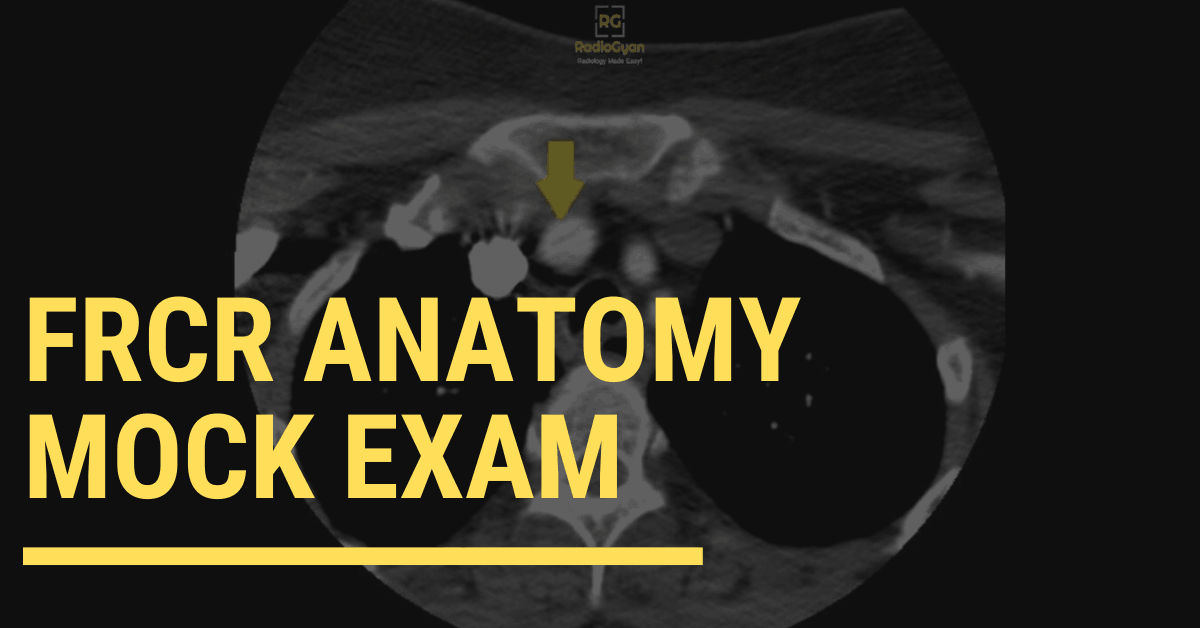Before I start the process I shall like to state here that FRCR 2B is, unlike popular belief, not an exam that is based on extensive theoretical knowledge. It is essentially an exam that is based on impromptu diagnosis and management especially of conditions that are life-threatening. There are 3 main components of the exam viz. – Rapids, Long cases, and viva. I shall deal with them one by one.
Rapids
Definitely one of the key components of the exam if not THE most important component. One needs to be very clear in the mind regarding what one expects to be marked as normal and abnormal. I started doing Rapids way back in 2019 and it took me almost 2.5 years to get 6 – but that should not scare you because Rapids may be tricky but they can be your savior too. Few key things I shall like to highlight here.
- Only and only mark those rapids as abnormal which you will feel are abnormal every time you look at the image. There should be absolutely no ambiguity at all.
- The total number of abnormal studies these days range from 14-to 16. If you get 14 definite abnormals you will score 6 provided you have not made any overcalls. If you mark 16 abnormal, you will score 7.5-8 provided you have not made any overcalls.
- Do not mark any image as abnormal just because you want to complete the above-mentioned figure. If you get 14 abnormal, but you mark 1 more just to make it 15- NEVER EVER DO THAT.
- If you mark such an ambiguous case as abnormal, you are most likely losing more than 1 mark since you will be making an overcall and also missing out on the real abnormal.
- In such scenarios don’t mark anything at all. Keep the number as 14- better to be safe than sorry!!
- Practice 2 sets a day for 2 months from FRCR Scholar/ Rad Exams/ Revise radiology.
- Do not practice more sets a day as that unnecessarily fatigue your mind and lower your confidence.
Longs
- This is a safety valve and probably the most under–rated aspect of the exam.
- The only thing in long cases is you should not miss any points in the description, observation, or management.
- Try to manage time as much as possible and finish each case by 10 mins so that you get 15 mins for revision.
- Each case will most likely have more than 1 principal diagnosis- so be on the watch out lest you get one and get “satisfaction of search”!
- Go through cases from Revise Radiology, FRCR Longs.
- Typing longs for practice is time-consuming so you can avoid typing instead of just seeing the cases and keeping the practice.
- Try to focus on management and syndromic associations since that may push your score above 6 and provide a cushion in case you miss out on viva or rapids.
Viva
- This is the most controversial and unpredictable component of the examination. This may actually cause heartbreak or give you unexpected joy. Be very careful regarding how to go about this.
- There will be 4 examiners in total who will take your viva for 15 mins each.
- There is no lower limit for the number of cases you must see. But whatever be the number of cases you see be sure not to rush them and do not think that you have to see more cases to pass.- that’s a myth!!
- Some of the cases are really tricky. They will set your pulse racing but try not to lose focus and go systematically through the review areas.
- If you miss any critical finding then that may reduce your marks below 6.
- Each modality is considered to be a separate markable event and is evaluated distinctly.
- So if you have the same case and you are given Xray, USG, and MRI for the same case, each is taken as a separate markable event and is evaluated differently.
- Do not give a wide range of differentials- that will reduce your marks, do not give any absurd management- that may again reduce your marks even if your diagnosis is correct.
- Take the cues from the examiners and see their body language- they are usually indicators as to whether you are doing ok or not.
- If the examiner moves on from one case to the next it usually means you have done that case properly or finished that case.
- Practice from the usual viva books like Top 3 Differentials, FRCR 2B Viva- Case discussion, Masterpass, etc. For more book recommendations, check out our exhaustive blog on the FRCR exam.
- Attend the sessions by Dr. Curtis, Dr. Amdad, Dr. Khan, and also the group ones organized by Team FRCR.
- Practice viva once or twice a week with a partner and try to present cases from Radiopedia playlists.
Watch this mock-viva video for the FRCR exam:
Check out more FRCR related posts on our website:
All the best to each and every one of you. May you all come out on top. Feel free to reach out to me at sayansarkar08 at the rate gmail.com
Dr. Sayan Sarkar.
D.N.B (Radiology), F.R.C.R (UK), Fellow in Onco-Imaging and Interventions (Tata Medical Center)
Consultant Radiologist, IILDS ( Indian Institute of Liver and Digestive Sciences)








Can you guide me as I am taking The FRANZR viva exam. Are Radiology cafe FRCR courses useful.